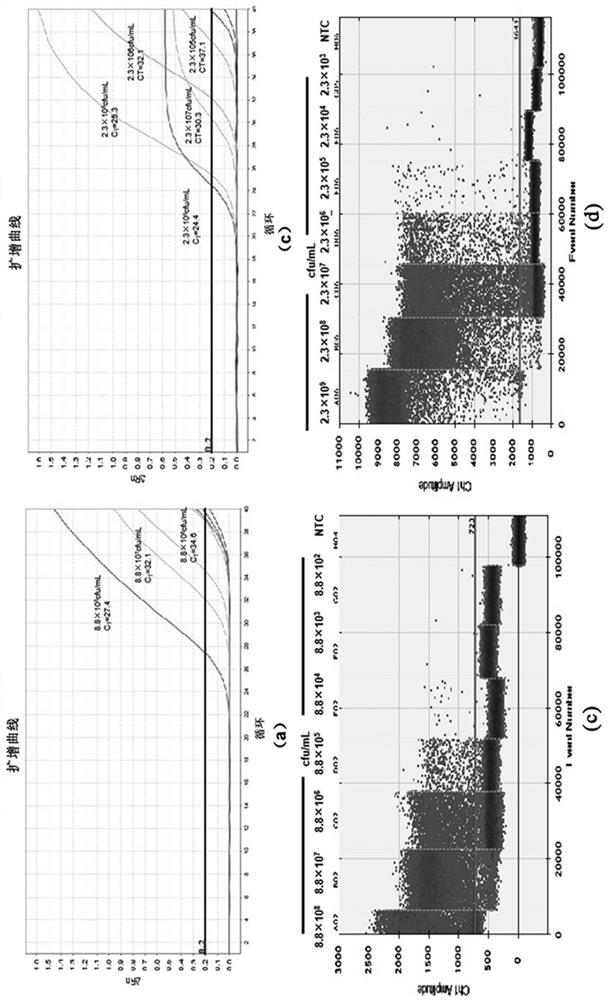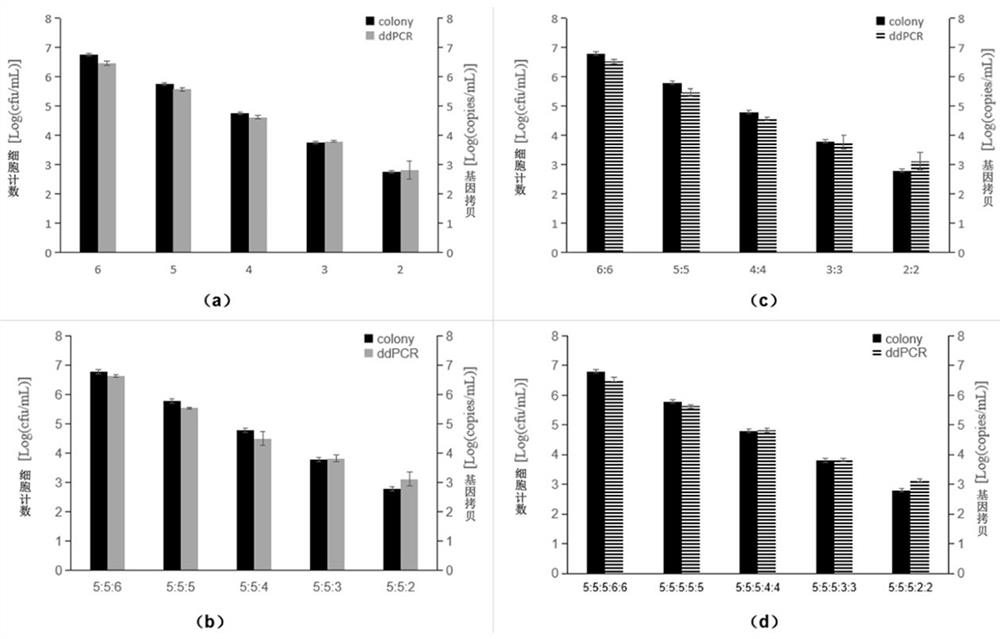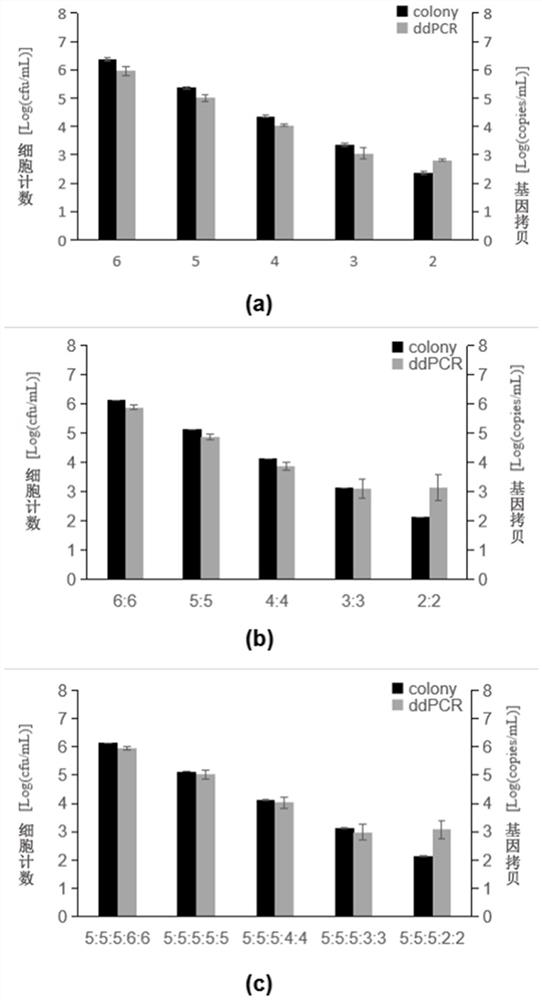A rapid and simultaneous method for the detection of Escherichia coli O157:H7 and Salmonella typhimurium in food
A technology of Escherichia coli and O157, which is applied in the field of microbial detection, can solve problems such as artificial pollution, inability to take samples, and long detection time, and achieve strong anti-interference ability, shorten detection time, and improve efficiency
- Summary
- Abstract
- Description
- Claims
- Application Information
AI Technical Summary
Problems solved by technology
Method used
Image
Examples
Embodiment 1
[0044] In this example, the detection sensitivities of qPCR and ddPCR to detect Escherichia coli O157:H7 and Salmonella typhimurium in the bacterial suspension, and the detection accuracy under different background bacteria conditions were compared.
[0045] ddPCR reaction system and conditions: ddPCR amplification system is prepared as follows:
[0046]
[0047]In order to avoid air bubbles during droplet transfer, 22 μL of reaction system was added to each sample well. The prepared reaction system was transferred to the micro-droplet generation card, and 70 μL of special oil for micro-droplet generation was added, and the sample in the micro-droplet generation card was generated into micro-droplets in the micro-droplet generator. Take 40 μL of the generated sample droplet to a 96-well plate and seal the film. Amplify in a PCR machine. The amplification program was: pre-denaturation for 10 min at 95°C; denaturation at 95°C for 20 s, annealing at 60°C for 25 s, extension ...
Embodiment 2
[0058] In this example, to determine the detection limit of Escherichia coli O157:H7 and Salmonella typhimurium in apple juice, 100 μL of pathogenic bacteria with different concentration gradients were taken and added to 900 μL NFC apple juice for artificial contamination, so that the pathogenic bacteria in apple juice The final concentration gradient was 10 6 cfu / mL~10 2 cfu / mL, the apple juice was centrifuged (12000rpm, 15min), the supernatant was discarded, resuspended with 1mL LPW solution, and 2μL was taken as a DNA template for ddPCR detection as described in Example 1.
[0059] Figure 4 In the middle, (a) ddPCR detects E.coli O157:H7 in apple juice alone, (b) Salmonellatyphimurium; in the figure, the black column is the plate count, and the gray column is the estimated concentration of E.coli O157:H7 copy number by ddPCR, oblique Striped columns are ddPCR calculated concentration of Salmonella typhimurium copy number. As a result, the minimum detection limit of E.co...
Embodiment 3
[0062] This example is to determine the detection limit of Escherichia coli O157:H7 and Salmonella typhimurium in pasteurized fresh milk: take 100 μL of pathogenic bacteria with different concentration gradients and add them to 900 μL of milk for artificial contamination, so that the pathogenic bacteria in milk The final concentration gradient of 10 6 cfu / mL~10 2 cfu / mL, centrifuge the milk (12000rpm, 15min), discard the upper fat layer, wipe the remaining protein on the tube wall with a sterile cotton swab, and wash the tube wall with 1mL LPW solution for 2-3 times, wait until there is no protein residue on the tube wall, and re- Resuspend with 1m LPW solution, take 2 μL as DNA template for ddPCR detection as shown in Example 1.
[0063] Figure 4 In the middle, (c) ddPCR alone detects E.coli O157:H7 and (d) Salmonellatyphimurium in fresh milk; in the figure, the black column is the plate count, and the gray column is the estimated concentration of E.coli O157:H7 copy numbe...
PUM
 Login to View More
Login to View More Abstract
Description
Claims
Application Information
 Login to View More
Login to View More - R&D
- Intellectual Property
- Life Sciences
- Materials
- Tech Scout
- Unparalleled Data Quality
- Higher Quality Content
- 60% Fewer Hallucinations
Browse by: Latest US Patents, China's latest patents, Technical Efficacy Thesaurus, Application Domain, Technology Topic, Popular Technical Reports.
© 2025 PatSnap. All rights reserved.Legal|Privacy policy|Modern Slavery Act Transparency Statement|Sitemap|About US| Contact US: help@patsnap.com



